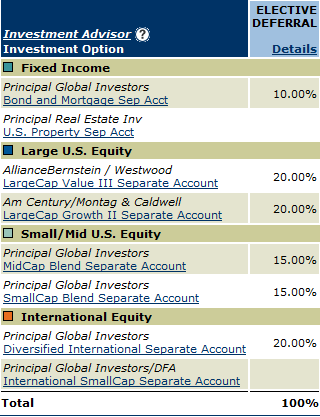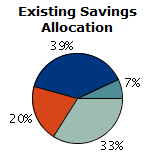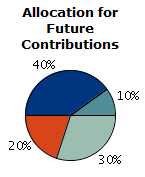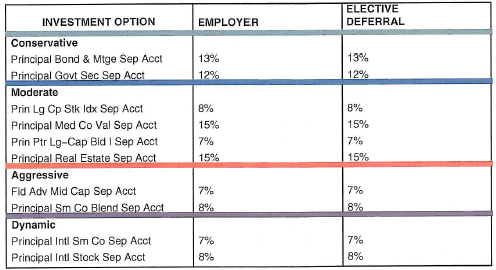When I first graduated from college and entered into the work force, all I knew about investing in the market was contribute as much as you can while you are young so you don’t get used to living entirely on your salary. But I was new money, my first real paycheck, and I had school expenses to pay back, and new car, and needed some fun money. Therefore, I’ve always contributed up to at least the 401k match that my company provided, but probably could have been more diligent to contribute more while I was young.
When it came to picking what to invest in within the 401k plan, I typically randomly selected among the different investment options available in my company plan with no real guidance. My number one criteria back then was looking at the fees and rate of return of each fund, but early on I didn’t know much about asset allocation.
So I decided to pull out my first 401k statement, going back to 2002, and see just how bad my investments options were for a young, uneducated engineer. The first company I worked for had their 401k plan through Principal, as does my current company, so it makes for some easy comparisons even though the investment options have changed. As you can see from the below chart, I had my money going all over the place.
Did I make money? Sure, everyone was back in 2002, but I didn’t have a lot invested at the time, and had no idea of the potential in the future of compounded growth.
Fast forward to 2005, when I switched to my current job, and had to rollover my previous 401k into our new plan. I was even more confused. I was invested in balanced portfolios that automatically adjust the investments over time and other specific vehicle funds, but I still had no real direction.

Around this same time I had a fellow, older engineer make the jump over to the financial world, so I decided to spend some time listening to him about my allocation. He of course was trying to drum up some business, but I was diligent about not over extending myself, and declined his services; however, he taught me a free lesson and helped guide me towards my current allocation. One item I remember discussing with him about was the possible duplicity of funds that I held. Since I owned balanced funds and individual funds, I probably owned the same stocks, bonds, etc. across multiple accounts. This didn’t even include my outside IRA and other investments. So I basically wiped the slate clean on my 401k and started from scratch.

I remember sitting down and developing a balanced approach across all spectrums of the market. Therefore, my model asset allocation consisted of: 10% Fixed Income, 40% Large Company U.S. Equity, 30% Small/Mid U.S. Equity, and 20% International. Obviously as I get older, I may start to gear my funds more towards safer fixed income vehicles, but for now while we are young, I’ll maintain my low percentage allocation.
My allocation today, I feel, is way more diverse, and ultimately rode out the rough time the past couple of years, more than my previous allocation may have done. The thing that surprises me the most though is how my allocation has pretty much stayed balanced over all these years. Every year when we meet with our Principle advisors, and during my constant research, I get told about rebalancing. The idea is to rebalance the portfolio to make sure you are still at your model asset allocation. I re-evaluate my account all the time to see if I should rebalance; however, the numbers are usually close enough to my model that I don’t have a need to rebalance.



Should the numbers ever become grossly out of align, then I’ll need to evaluate rebalancing to match my model allocation.

